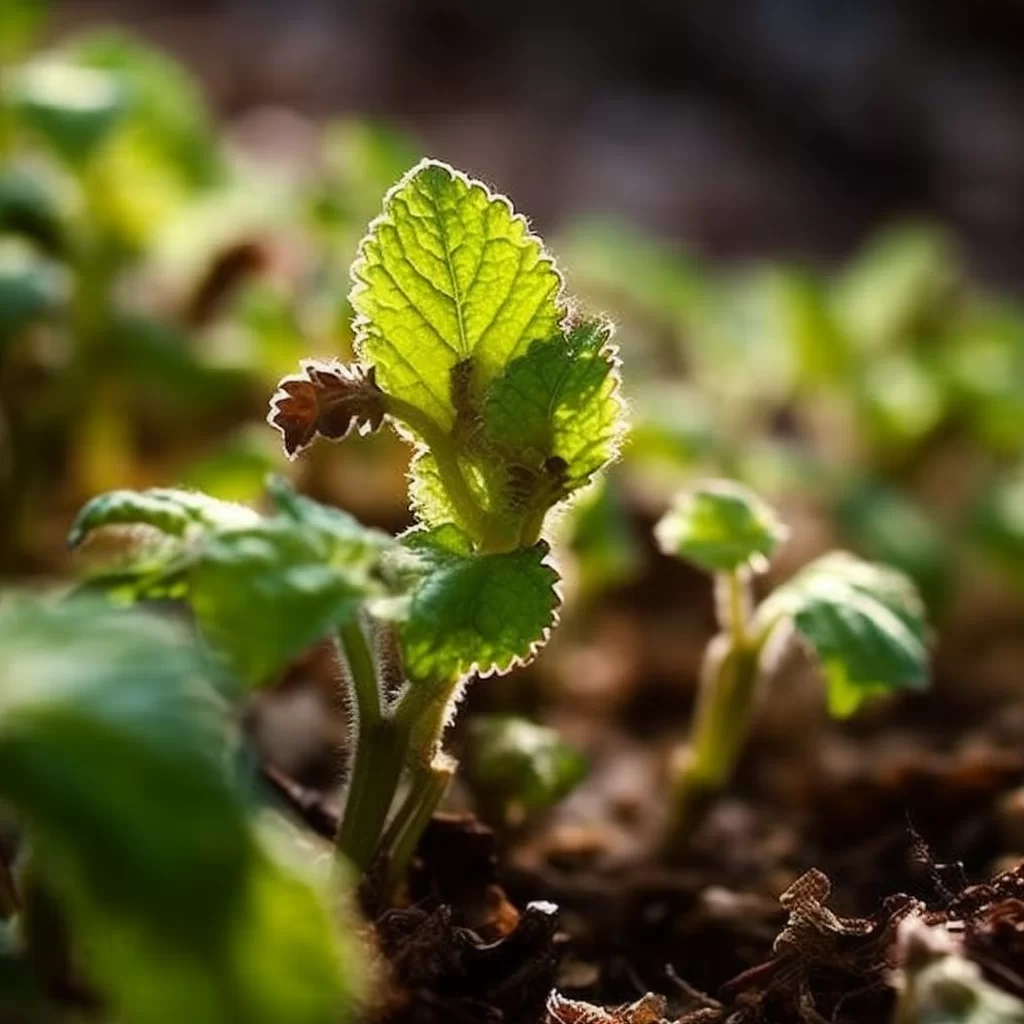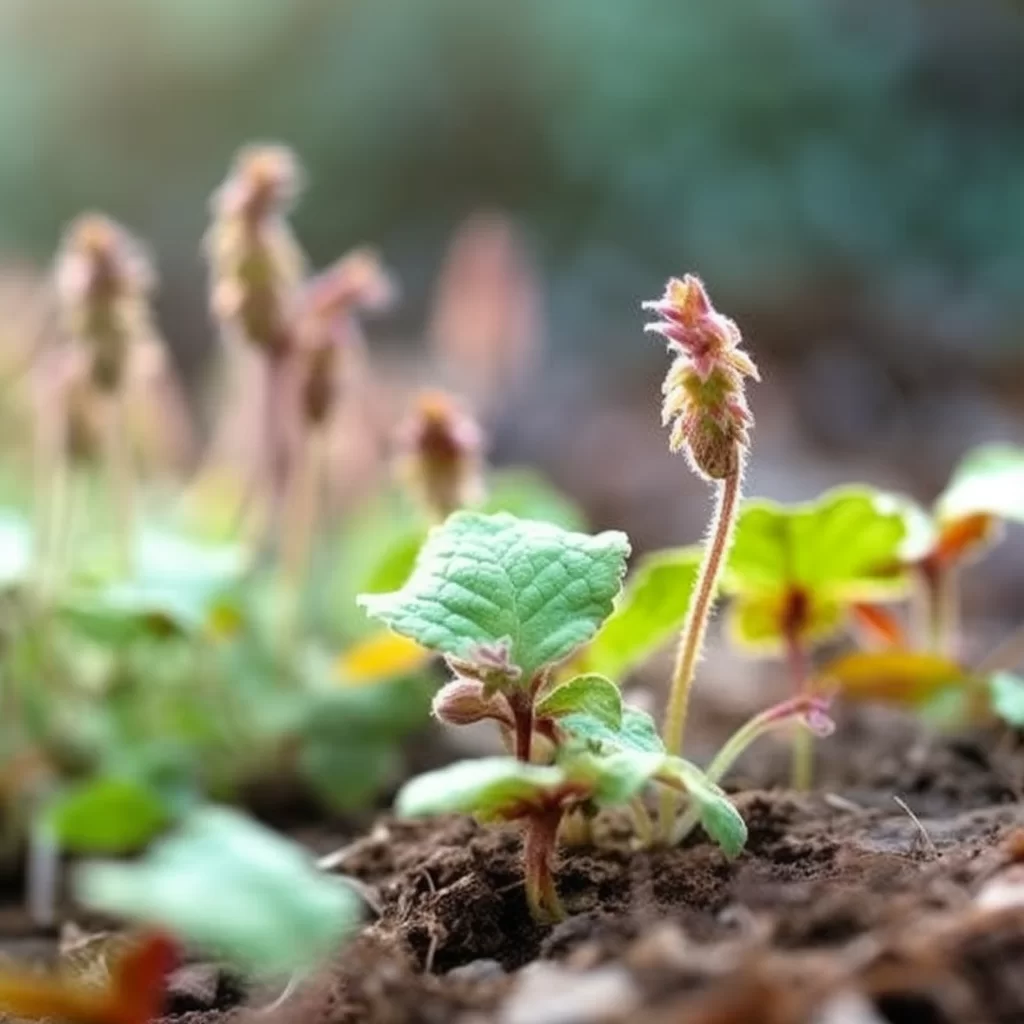Story of Day :
Contents
Dead Nettle Plants: A Complete Guide and Care Tips
Dead nettle plants, which go by the scientific name Lamium, are a popular choice for gardeners and herbalists alike.
Despite its somewhat ominous name, this plant boasts delicate pink or purple flowers that add an enchanting touch to any garden.
In addition to their aesthetic appeal, dead nettles have several practical uses.
These plants have long been used in traditional medicine to treat a range of ailments including respiratory issues and inflammation.
As such, cultivating dead nettle plants not only adds beauty to your outdoor space but also provides you with a natural remedy for common health problems.Taking care of these plants is relatively straightforward – they thrive in moist soil and partial shade but can also tolerate full sun exposure.
Dead nettles are hardy perennials that require little maintenance once established in your garden.
They are resistant to pests and disease making them an ideal choice for novice gardeners looking for low-maintenance yet visually pleasing additions to their gardens.
With its striking blooms and practical uses, it’s no surprise why dead nettle plants should be on every gardener’s must-have list!
Characteristics of Dead Nettle Plants
The dead nettle plant is an interesting and eye-catching member of the mint family.
With a variety of hues ranging from pink, purple, white to yellow; it’s hard not to notice this unique plant.
Its vibrant colors alone are enough to brighten up any garden but what really sets it apart are its flowers that blossom in the spring and continue through summer.
These small orchid-like flowers make for a beautiful sight, attracting bees and butterflies alike.
Furthermore, the leaves themselves have a distinct texture adding another dimension of interest to this already fascinating plant. Adding dead nettle plants to your garden is an excellent way to not only add some much-needed color but also introduce diversity in texture that can be lacking in gardens sometimes.
Adding dead nettle plants to your garden is an excellent way to not only add some much-needed color but also introduce diversity in texture that can be lacking in gardens sometimes.
Its beauty aside, these plants are relatively easy to care for making them perfect for beginner or experienced gardeners alike who want something new and unique added into their collection!
This perennial plant can grow up to 18 inches tall and spreads out quickly making it an excellent ground cover option in gardens.
It does well when planted under trees or shrubs where sunlight is limited but can grow anywhere as long as there’s good drainage.
How to Care for Dead Nettle Plants
Caring for dead nettle plants requires little effort but there are a few things you need to keep in mind:
- Sunlight: The best place to plant your dead nettle is where it gets partial shade as too much direct sunlight can scorch the leaves.
- Soil: The soil should be well-draining with organic matter added if needed before planting this herbaceous perennial
- Fertilizer: You don’t need any special fertilizer for your dead nettles although some compost added annually will keep them healthy
- Pests and Diseases: Dead nettle plants are not usually bothered by pests but can be susceptible to root rot if there’s too much moisture in the soil.

Medicinal Properties of Dead Nettle Plants
Dead nettle plants are not only beautiful in appearance but also have remarkable medicinal properties.
The plant has been used for centuries in traditional medicine as an effective anti-inflammatory herb.
Its natural healing properties can help reduce swelling and inflammation, making it a popular choice for treating various health ailments.
Furthermore, the dead nettle plant is renowned for its ability to alleviate menstrual cramps by stimulating blood flow and reducing pain.
This makes it a valuable natural remedy for women dealing with painful menstrual cycles.
Dead nettle plants contain numerous beneficial compounds that work together to relieve discomfort and enhance overall well-being.
With its diverse range of medicinal benefits, the dead nettle plant is an excellent addition to any herbal medicine cabinet!
Dead nettle leaves are rich in flavonoids, which are natural compounds with antioxidant properties.
Antioxidants protect our cells from free radicals that can cause damage over time, leading to various health issues and accelerated aging.
By consuming dead nettle leaves, we can benefit from their antioxidant properties and potentially slow down the aging process. Additionally, research suggests that dead nettles might help treat respiratory conditions such as asthma or bronchitis due to their anti-inflammatory properties.
Additionally, research suggests that dead nettles might help treat respiratory conditions such as asthma or bronchitis due to their anti-inflammatory properties.
These anti-inflammatory compounds may help reduce inflammation in the airways and improve breathing.
Therefore, incorporating dead nettle leaves into your diet could have multiple health benefits for your overall well-being.
Conclusion
Dead nettle plants are a great addition to your garden for several reasons.
Not only do they bring a beautiful array of colors, with their pink, purple and white flowers, but they’re also incredibly low maintenance and easy-to-care-for perennials.
These plants are perfect for those parts of your garden where sunlight is limited, such as under trees or shrubs.
Dead nettle plants can be used as ground covers in these areas, bringing both texture and color to your garden all year round.With their unique characteristics and beautiful blooms, dead nettle plants are an excellent choice for any gardener looking to add some variety to their outdoor space.
They offer an effortless way of creating pops of color within the shade while requiring minimal maintenance efforts on your part – making them the perfect plant for almost anyone who loves gardening! Whether you’re a seasoned gardener or just starting out with this hobby, dead nettle plants will undoubtedly make an attractive addition that enhances the appearance of your garden’s landscape year-round.

The dead nettle plant is a wonderful addition to any garden that not only adds aesthetic value but also provides numerous health benefits.
These herbaceous perennials are packed with flavonoids that have anti-inflammatory properties, which can help alleviate respiratory conditions such as asthma and bronchitis.
Not only do they offer health benefits, but they’re also great for ground-cover options in home gardens and require very little maintenance.So if you’re looking to add some variety to your collection of plants, then the dead nettle is definitely worth considering.
With their beautiful appearance and added health benefits, these magnificent plants are sure to leave you feeling happy and satisfied in your gardening endeavors.
Make sure to include them in your next planting session!